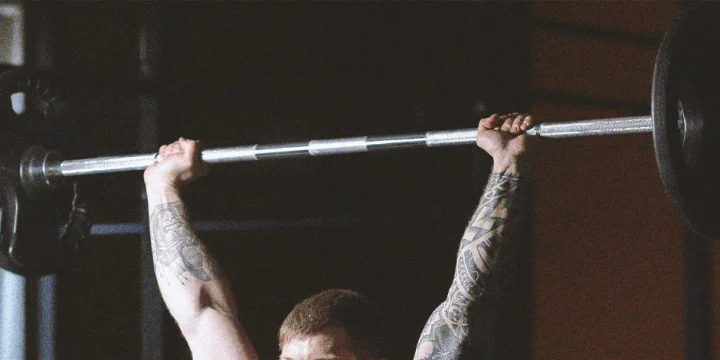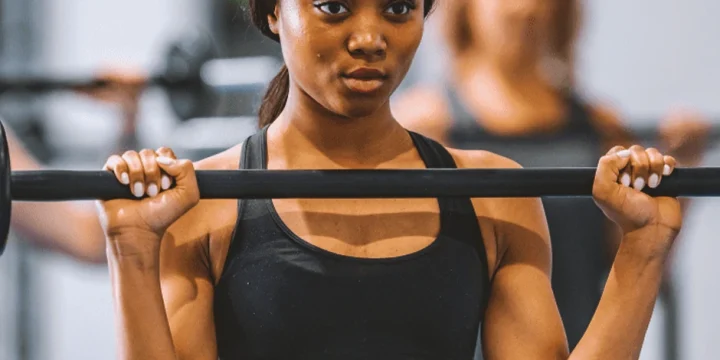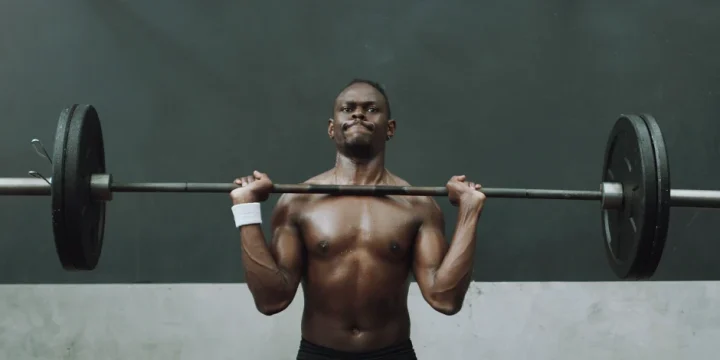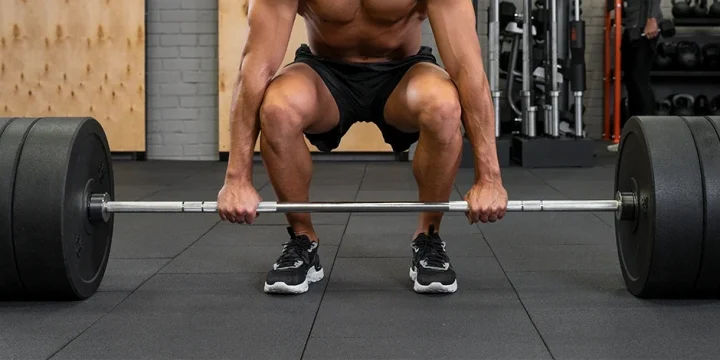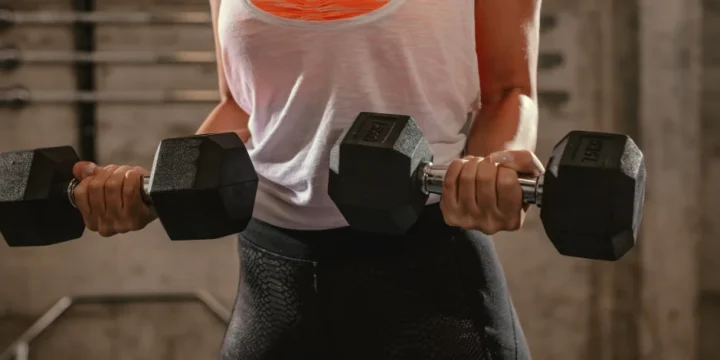The rack pull is an exercise ideal for both beginners and advanced lifters. It emphasizes your back, glutes, hamstrings, and grip.
It offers a comprehensive workout while improving form and isolating specific muscles with a starting point higher than a conventional deadlift.
Drawing from my journey as a personal trainer and after helping hundreds of people with their training routines, I’ve tested the rack pull’s effectiveness in any strength training program.
It enables you to lift heavier loads than similar exercises, translating into muscle growth and developing a more robust and safe lifting technique.
Here, I’ll guide you to perform a rack pull properly to maximize its benefits.
Quick Summary
- You can perform a rack pull by using a barbell at knee level, lifting the bar in a more vertical position, and lowering it back.
- Rack pulls target the lower back, glutes, and hamstrings, with variations in grip styles and rack heights for customized intensity.
- Different from other exercises like a standard deadlift or trap bar deadlift, rack pulls offer a focused workout for the specific muscles, enhancing strength effectively.
How to Do a Rack Pull [Step by Step]

To perform rack pulls, you need a barbell, weight plates, enough core and arm strength to support the loaded barbell, and controlled motion.
Here are the detailed steps to do the exercise correctly:
- Set Up the Barbell: Rack pulls work with the barbell on the power rack around knee level. Adjust the height based on your flexibility and the muscle group you want to train.
- Stand Correctly: Stand close to the barbell with your feet hip-width apart. Your toes should be pointing outwards to facilitate knee flexion.
- Grip the Barbell: Reach down and grasp the barbell. Your hands must be just outside your knees. You can choose between an overhand or mixed grip when performing rack pulls.
- Lift with Proper Form: Lift the bar and push through your heels and hips forward with the back straight. Keep your arms extended throughout the movement, acting like hooks holding the barbell.
- Lower the Barbell: After reaching the standing position, lower the barbell back onto the rack in a controlled manner.
- Repeat the Movement: Repeat as many times as necessary according to your workout routine.
Rack Pull Variations

Try these rack pull variations to align heavy weights and skill goals.
Smith Machine
It is recommended that those new to this type of exercise begin with smith machine rack pulls.
They provide added stability, ensuring your form remains consistent throughout the movement.
This can be highly beneficial in preventing potential injuries and maximizing the engagement of targeted muscle groups.
How to do it:
- Set the bar to knee height on the Smith machine.
- Position yourself facing the machine, feet shoulder-width apart.
- Grasp the bar with an overhand grip.
- Engage your core, and straighten your back. Lift the bar while extending your knees and hips.
- Lower the bar to the starting point.
Related: Best Smith Machines For Home Gyms
Above the Knee
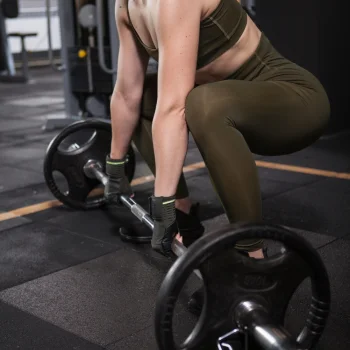
Above-the-knee rack pulls, performed using a power squat rack, enable you to pull a heavier load due to the reduced range of motion.
This can significantly accelerate muscle gains, especially in the upper back and trapezius muscles.
How to do it:
- Position the bar on the rack above knee level.
- Stand with your feet hip-width apart. Grasp the bar with an overhand grip.
- Engage your core, straighten your back, and lift the bar by extending your hips.
- Lower the bar to the starting position.
Sumo
Sumo deadlift rack pulls offer a beneficial variation for those focusing on leg muscles, including the glutes and hamstrings, in addition to back training [1].
The power rack provides the necessary support for the barbell. It allows safe adjustment of the weight's height and facilitates the unique form of hip extension in sumo pulls, often leading to improved overall body strength.
How to do it:
- Set the bar on the rack parallel to the knee.
- Stand in more than a hip-width foot apart position.
- Bend knees and hips to grasp the bar.
- Engage the core, keep your back straight, and lift the bar while extending your hips and knees.
- Lower the bar back to the first position.
Wide-Grip

Wide-grip rack pulls challenge the same muscles targeted in conventional rack pulls but place additional demand on your upper back and shoulders due to the wider grip.
This variation benefits those seeking to improve their upper body strength and stability.
How to do it:
- Set the bar on the rack at knee height.
- Stand with your feet hip-width apart. Grasp the bar with a more than shoulder-width grip.
- Engage the core, keep your back straight, and lift the bar while extending your hips and knees.
- Lower the bar to the starting position.
Also Read: Wide Grip Lat Pulldown 101 Guide
Isometric
The isometric rack pull targets the entire body, including the upper back muscles, amplifying the demand on your core and stabilizer muscles [2].
This exercise involves holding the pull at the top of the movement, increasing time under tension.
Here's how to perform an isometric rack pull:
- Set up like doing a standard rack pull, with the bar parallel to the knee.
- Lift the bar as usual. Once you reach the top, hold for a few seconds before lowering the weight.
- Repeat the exercise, maintaining the isometric hold at the top each time.
Snatch-Grip

Snatch-grip rack pulls are a deadlift variation that strengthens your posterior chain.
They require a wider grip than a traditional deadlift, which emphasizes your lats, traps, and rhomboids more.
This type of pull can also help to improve your deadlift lockout strength.
How to do it:
- Position the bar at knee height on the rack.
- Stand with your feet hip-width apart. Grasp the bar with a wide grip.
- Engage your core, straighten your back, and lift the bar while extending your hips and knees.
- Lower the bar to the starting position.
Creating Your Rack Pull Routine

Here's how a rack pull routine focused on multiple muscle groups, heavy loads for gains, and variations may look:
Warm-Up
- Hip Circles: 2 sets of 10 in each direction
- Leg Swings: 2 sets of 15 per leg
- Cat-Camel Stretches: 2 sets of 10 reps
- Arm Circles: 2 sets of 10 forward and 10 backward
- High Knees: 1 minute
- Light Deadlifts: 2 sets of 10 with lightweight
Workout Routine
- Smith machine rack pulls: 3 sets of 6-8 reps
- Above-the-knee rack pulls: 3 sets of 8-10 reps
- Sumo rack pulls: 3 sets of 6-8 reps
- Wide-grip rack pulls: 3 sets of 6-8 reps
- Isometric rack pulls: 3 sets of 3-5 reps holding for 5-10 seconds [3]
- Snatch-grip rack pulls: 3 sets of 6-8 reps
Cooldown
- Walking: 5 minutes
- Deep Breathing: 3 minutes
- Seated Hamstring Stretch: 2 sets of 30 seconds on each leg
- Child's Pose: Hold for 1 minute
- Foam Rolling: Spend 5-10 minutes on the back, glutes, and hamstrings
- Cobra Pose: 2 sets of 30 seconds
“Relationships between muscle architecture, deadlift performance, and maximal isometric force produced at the midthigh and midshin pull in resistance-trained individuals.”
- Alain Doessegger, Swiss Federal Institute of Sport Magglingen
Muscles Trained when Doing Rack Pulls

Rack pulls activate and strengthen many muscles as a potent compound exercise. The specific muscles worked will depend on the variation performed.
Here's a list of muscles that you add rack pulls to your training:
- Back Muscles: The upper and lower back muscles, including the latissimus dorsi and the erector spinae, get a fantastic workout from rack pulls. The exercise requires these muscles and pulling strength to support heavier loads.
- Hamstrings and Glutes: Rack pulls also target the hamstrings and glutes. These muscles are crucial for hip extension and are engaged heavily, especially when performing the exercise with more weight.
- Forearms and Grip Strength: Your forearms and hand muscles must work hard to maintain a strong grip. Over time, this can significantly improve grip strength, making it easier to handle heavier loads in other exercises.
- Abdominals: Although not the primary focus, the abdominal muscles are activated during rack pulls. They are crucial in stabilizing your body throughout the exercise, helping maintain a full range of motion.
- Hip Muscles: Rack pulls stimulate the hip muscles, including the hip flexors and extensors. Hip extension under heavy load during rack pulls can increase strength in these areas.
“Increases in both maximal force and velocity will ultimately result in an increase in power.”
- Alain Doessegger, Swiss Federal Institute of Sport Magglingen
Rack Pull Benefits

Integrating rack pulls into your strength training routine offers several advantages, among them is a proper technique.
See all the exercise’s benefits:
- Heavy Weight Control: Rack pulls allow you to handle a "heavy weight" better than traditional ground lifts, contributing to overall strength and adaptability.
- Technique Development: These pulls are ideal for fostering a "proper technique." You can focus on maintaining "proper back tension" and synchronizing hip and knee lockout.
- Muscular Development: Rack pulls enhance upper body mass and strength, including back, shoulder, and arm muscles.
- Overall Performance Improvement: Rack pulls bolster your performance in other weightlifting exercises.
FAQs
How to Do Rack Pulls Compared to Deadlifts?
You can do rack pulls with a barbell set at knee height on a rack, focusing on the top half of a lift, emphasizing back and glute muscles. Instead, deadlifts begin with the barbell on the ground and involve a full range of motion.
Are Rack Pulls Safe for Your Back?
Yes, rack pulls are safe for your back and improve posture when exercising properly.
When Should I Do Rack Pulls?
You should do rack pulls when you want to train the lower and upper body. Include them for strength-building and muscle growth. You can even add pull-focused workout days to your routine.
References:
- https://www.researchgate.net/publication/318018937
- https://www.researchgate.net/publication/368548312
- https://www.researchgate.net/publication/370156669
About The Author
You May Also Like
